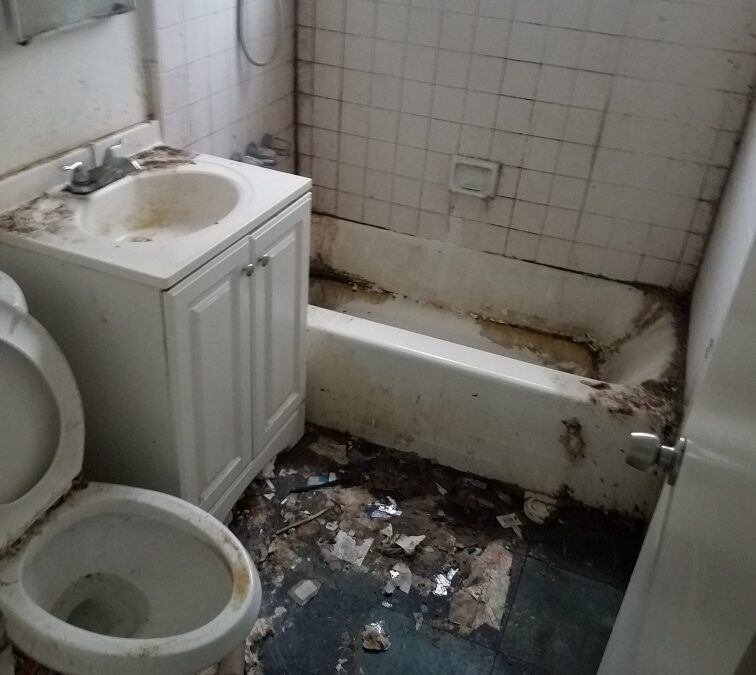12 tips to prevent summertime mold
Mold growth can be more prevalent during periods of high temperature and humidity, like summer. So what are you and your family doing to combat unwanted mold during this time of year? Warmer temperatures and summer rain are just a few of the factors that contribute to mold growth during the summer months. According to the Environmental Protection Agency (EPA), even small amounts of indoor mold can lead to allergies, asthma attacks, and increase the risk of illness, particularly in children and the elderly.
If you are concerned about mold growth, or if you already have mold present, we’ve created a list of twelve tips you may find helpful in reducing mold and minimizing mold’s potential damage on your home. The first step is learning how to identify mold.
How do you identify mold?
Have you ever noticed a persistent musty smell, but struggle to identify where it’s coming from? It’s quite possible that the musty odor may be a result of mold growth under carpets, inside walls, or in ventilation ducts. Between washing clothes, dishes, showers and the many other household tasks we deal with on a day-to-day basis, we create moisture that, without proper ventilation, can lead to mold growth.
Since mold is able to thrive during the warmest months of the year, summer is a perfect opportunity for you to inspect your house for mold infestation. Consider checking around the house for water buildup, especially under sinks and around toilets, as well as, bathtubs and behind appliances (like washing machines) that may be prone to leakage. A thorough housecleaning can also get rid of potential food sources for mold, like dirt and oil. It’s also important to inspect those areas of your house that are not used regularly, like your guest room or coat closet. Other areas to check-in on include attics and basements. Since attics and basements are some of the most commonly known areas to have inadequate waterproofing, they are some of the best places for mold to grow. The best way to avoid mold buildup is to increase ventilation. Increasing ventilation will promote better air circulation and objectively, reduce the level of moisture throughout your home. Below, we’ve compiled 12 tips to discourage mold growth and potentially reduce the harmful effects of existing mold within your home.
12 tips for summertime mold prevention:
- Install exhaust fans. For starters, if your home does not have exhaust fans, you should strongly consider installing them in the kitchen and bathrooms. It may also be a good idea to run the exhaust fans longer during humid days since these spaces generally harbor more moisture than other rooms in the house.
- Promote proper ventilation. It is important to make sure appliances like your dryer ventilates outside, and not into a utility room, closet, crawlspace, or attic.
- Harness the power of sunlight. Opening blinds and curtains not only discourages mold growth, but also promotes better air circulation.
- Install a dehumidifier. Using a dehumidifier can be extremely helpful in preventing against excessive moisture buildup. According to the American Medical Association (AMA), maintaining a humidity level between 30 and 50% is ideal.
- Maintain a clean house. One of the easiest ways to prevent mold growth is to keep your house clean.
- Clean out air filters. Air filters are the first method in preventing mold spores from entering your home.
- Regularly dust and vacuum. Regularly dusting and vacuuming your home reduces dust and allergens. It can also help eliminate microscopic mold spores before they have a chance to grow.
- Get rid of rotten food. Regularly clean your refrigerator and check your fruit basket for any old/rotting food. You can also reduce the chances of mold growth by regularly cleaning frequently used surfaces like your kitchen and bathroom countertops.
- Fix those leaky pipes. Believe it or not, leaky showers, roofs, and faucets can lead to mold growth and water damage. As stated above, you should also make sure you’re regularly cleaning kitchen and bathroom countertops with a mixture of vinegar and water (or, baking soda and water) can greatly reduce potential mold growth. You may also want to consider getting a leak detector. Leak detectors have gadgets that can detect unnecessary moisture in dishwashers, water heaters, refrigerators, and other appliances prone to moisture. If the leak detector finds excessive moisture, it can alert you on your mobile phone.
- Keep the rain out. Make sure windows are sealed and closed properly to prevent unwanted leaks from getting into the house.
- Keep an eye on that leaky roof. Make sure water isn’t seeping in through your roof. Even if your roof shingles appear to be fine, water can still leak in. You can reduce potential water leaks by making sure gutters are clean from debris and downspouts are draining away from your home.
- Pick up those wet clothes. Whether you’re pulling clothes out of the washer or taking them off after going to the beach or pool, you need to dry your clothes immediately. When you leave damp clothes out, that damp pile of clothing can create dampness, which can promote mold growth. If you don’t want to use the dryer, leave wet clothes outside until they are dry.
By following the tips mentioned above, you can potentially reduce the chances of unwanted mold growth in your home. More importantly, you may be able to promote a healthier living environment for your family and avoid unnecessary costs associated with mold remediation. Nevertheless, if you believe mold growth in your home poses dangers to family members’ health, you should contact an experienced and professional San Diego mold testing company, like Rarefied Air Environmental. Only a licensed technician can determine whether toxic mold is growing in your home and if the mold growth is a danger to inhabitants’ health. Contact us today!

